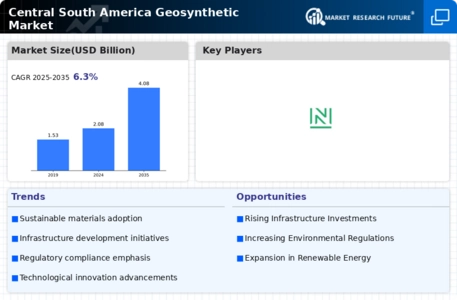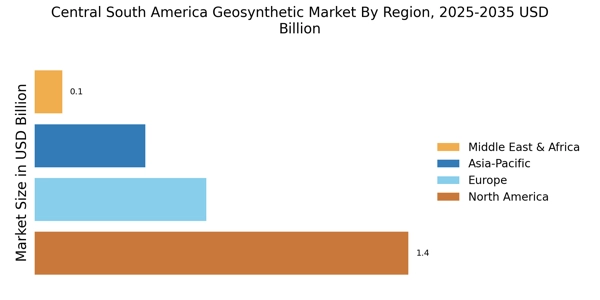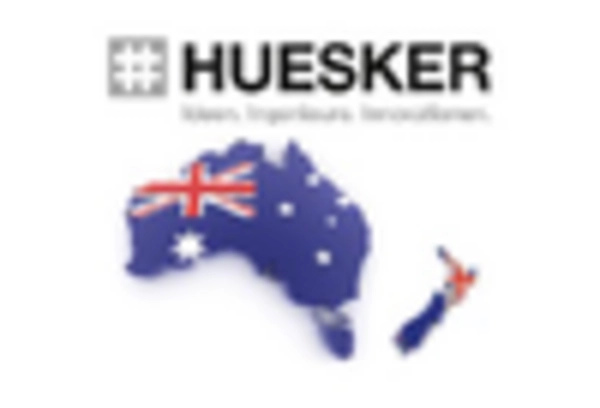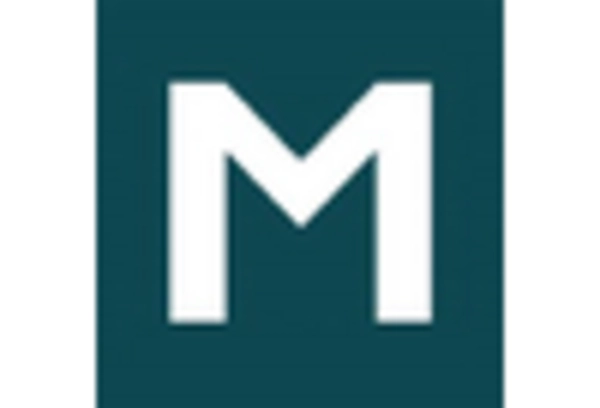Environmental Protection Regulations
The Central South America Geosynthetic Market is significantly influenced by stringent environmental protection regulations. Governments are increasingly mandating the use of geosynthetic materials in construction and land reclamation projects to mitigate environmental impacts. These regulations often require the implementation of erosion control measures and waste containment solutions, which geosynthetics can effectively provide. As of 2025, it is projected that compliance with these regulations will drive a 20% increase in the demand for geosynthetic products. This regulatory landscape not only promotes sustainable practices but also positions geosynthetics as essential components in environmentally responsible construction.
Infrastructure Development Initiatives
The Central South America Geosynthetic Market is experiencing a surge due to ongoing infrastructure development initiatives across the region. Governments are investing heavily in transportation, water management, and urban development projects. For instance, the construction of new highways and bridges necessitates the use of geosynthetic materials for soil stabilization and erosion control. In 2025, it is estimated that infrastructure spending in Central South America will reach approximately USD 150 billion, creating a robust demand for geosynthetics. This trend is likely to continue as countries aim to enhance their infrastructure resilience against natural disasters, thereby driving growth in the geosynthetic sector.
Rising Demand for Sustainable Solutions
The Central South America Geosynthetic Market is witnessing a growing demand for sustainable construction solutions. As environmental concerns gain prominence, construction companies are increasingly adopting geosynthetic materials that offer durability and reduced environmental impact. These materials are often recyclable and contribute to lower carbon footprints in construction projects. In 2025, the market for sustainable geosynthetics is expected to grow by 15%, reflecting a shift towards eco-friendly practices. This trend is likely to be driven by both consumer preferences and regulatory pressures, positioning geosynthetics as a key player in the sustainable construction landscape.
Technological Innovations in Geosynthetics
The Central South America Geosynthetic Market is benefiting from rapid technological innovations that enhance the performance and application of geosynthetic materials. Advances in manufacturing processes and material science have led to the development of high-performance geosynthetics that offer improved durability, strength, and functionality. For example, the introduction of smart geosynthetics equipped with sensors for monitoring soil conditions is revolutionizing the industry. By 2025, it is anticipated that these innovations will contribute to a 25% increase in the adoption of geosynthetics in various applications, including road construction and landfill management, thereby expanding the market.
Increased Investment in Mining and Energy Sectors
The Central South America Geosynthetic Market is poised for growth due to increased investment in the mining and energy sectors. As these industries expand, the need for effective land management and environmental protection becomes paramount. Geosynthetics play a crucial role in tailings management, slope stabilization, and erosion control in mining operations. In 2025, investments in mining and energy are projected to exceed USD 50 billion, creating substantial opportunities for geosynthetic applications. This trend indicates a robust market potential, as companies seek to enhance operational efficiency while adhering to environmental standards.


















Leave a Comment